and the distribution of digital products.
Virtual Besties: TV Shows, Social Media and the Evolution of Parasocial Relationships
"In parasocial relationships, the screen gives, but it doesn't give back."
— Sherry Turkle, Alone Together: Why We Expect More from Technology and Less from Each Other.
Vietnamese TV shows landscape has reached its peak in the last couple of years, something I haven’t even thought was possible since the 2010s. And it’s not even happening on TV.
\
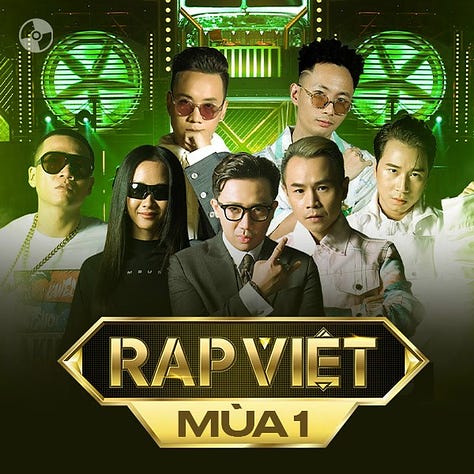 In recent years, while traditional TV viewing is decreasing among young people, TV shows like Rap Việt*, Anh Trai Say Hi,* and Anh Trai Vượt Ngàn Chông Gai have seen a significant rise in popularity in Vietnam.
In recent years, while traditional TV viewing is decreasing among young people, TV shows like Rap Việt*, Anh Trai Say Hi,* and Anh Trai Vượt Ngàn Chông Gai have seen a significant rise in popularity in Vietnam.
\
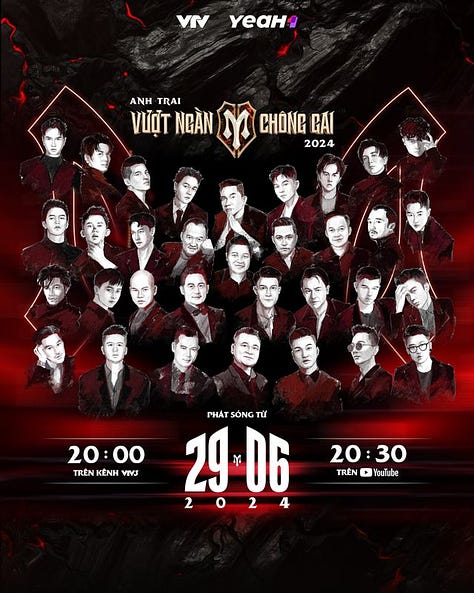 Rap Việt tapped into the growing hip-hop culture, becoming a massive hit by bringing underground rap into mainstream media. The show's unique format, showcasing talent through competitive battles, resonated with younger audiences, propelling the genre forward.
Rap Việt tapped into the growing hip-hop culture, becoming a massive hit by bringing underground rap into mainstream media. The show's unique format, showcasing talent through competitive battles, resonated with younger audiences, propelling the genre forward.
\
Meanwhile, shows like Anh Trai Say Hi and Anh Trai Vượt Ngàn Chông Gai have gained traction for their engaging, reality-based content. They combine humor, challenges, and human connections, allowing viewers to relate to the personalities on screen, and fueling a sense of camaraderie. \n 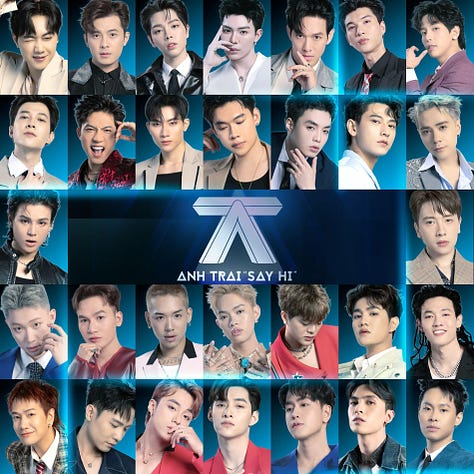
\ These shows leverage relatability and entertainment to keep viewers hooked, reflecting a shift toward more modern, diverse content in Vietnamese television.
\ In the rise of shows like Anh Trai Say Hi and Anh Trai Vượt Ngàn Chông Gai, television has once again perfected the art of crafting parasocial relationships, making us feel deeply connected to personalities on screen who, in reality, don’t know we exist.
\ These reality-based programs combine humor, challenges, and emotional moments, allowing viewers to form bonds with the cast, much like Rap Việt’s connection with the hip-hop community.
\ It’s truly a brilliant tactic — why invest in cultivating real friendships when you can instead pour your emotional energy into screen personas? The beauty of this approach is that it keeps us coming back for more, desperate to see how our “friend” on screen is doing this week. Did they survive the cliffhanger? What are their bonds with the rest of the cast like? Did they learn a valuable life lesson? We’re on the edge of our seats, fully aware that these characters are created by writers sitting in a room somewhere, yet still feeling like we must check in on them.
\ TV shows have cracked the code: make us care deeply about people who we think we know deeply on a personal level, and we’ll happily keep tuning in. It’s not manipulative at all — just good, clean emotional exploitation in the name of entertainment. What better way to ensure engagement than to have viewers form unreciprocated bonds with characters who will never let them down, simply because they aren’t real in the first place?
\ Honestly? Hats off to them.
1. But first, what is “parasocial”?Parasocial interaction (PSI) is the phenomenon where audience members, through the magic of mass media and online platforms, convince themselves that they're best buds with someone they've never met—or rather, someone who doesn’t even know they exist.
\ Coined in 1956 by Donald Horton and Richard Wohl, PSI is a one-way street of affection where television personalities, influencers, and fictional characters unwittingly become the emotional support humans for millions. After all, nothing says "friendship" truer than staring at a screen while your favorite celebrity blinks unseeingly in your general direction.
\
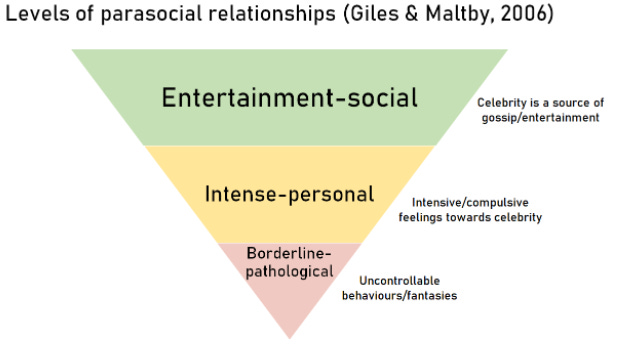
\ At its heart, parasocial interaction is a delightful illusion. After watching enough clips, users feel like they're having coffee with their favorite talk show host or that a fictional character genuinely cares about how their day went.
\ The more viewers consume this content, the more they start to feel like they’re in a real relationship—one where they offer no meaningful contribution, but who cares? It's not like reciprocity is a hallmark of friendship or anything. As with any good imaginary relationship, things deepen over time. Viewers start to form bonds based on trust and self-disclosure—though, of course, the "self" doing the disclosing is the persona, and the "self" receiving it is a rapt audience member, furiously liking every post as if it were a binding contract of friendship. It’s the emotional equivalent of naming a star after yourself: meaningless but emotionally fulfilling.
\ And in this digital age, social media is the fertile soil in which these parasocial relationships thrive. Where once the audience had to be content with a weekly TV episode, they can now bask in the glory of daily updates from their favorite influencers, who, let’s be honest, don’t even know these people are out there.
\ With every follow, like, or retweet, fans cling to the illusion of closeness like a lifeboat in a sea of carefully curated content. Each "interaction"—be it a thumbs-up emoji or a heart-eyed reaction—brings them closer to the persona, like tossing a love note into a bonfire and assuming the smoke will reach their beloved.
\ In fact, the consistency of content appearances could lead some to believe that these personas are truly their closest confidants, never mind the thousands of others who think the same thing. It's the ultimate one-sided romance, built on the fragile foundation of shared pixels and snappy catchphrases. And yet, just like that star you named, it burns brightly in the imagination—fueled by nothing more than distance and desire.
2. Social media as the leverage for parasocial interactionsIn 1998, John Eighmey of Iowa State University and Lola McCord from the University of Alabama decided to grace us with the profound discovery that parasocial relationships—those delightful one-sided affairs where people think they're besties with a screen—are a key factor in determining how often we visit websites.
\ Their study, dramatically titled "Adding Value in the Information Age: Uses and Gratifications of Sites on the World Wide Web," pointed out the glaringly obvious: “Websites with personality attract more visitors.”
\ Groundbreaking, right? Apparently, the more a website oozes charm, the more likely people are to feel like they're in a full-blown relationship with it. In 1999, John Hoerner, also from the University of Alabama, published his magnum opus, "Scaling the Web: A Parasocial Interaction Scale for World Wide Web Sites." In this scholarly deep dive, he heroically attempted to quantify just how attached people get to websites.
\ His solution? Throw some digital personae at them.
\ These personae, according to Hoerner, are sometimes just the online alter egos of actual people—usually celebrities who already have millions of admirers—or, in more creative cases, the Frankenstein-esque brainchild of webmasters.
\ Think of them as imaginary friends but with their email addresses. Hoerner claimed that these personae could exhibit "companionship qualities," including regular pop-ups, immediate responses, and the illusion of face-to-face interaction. Nothing says companionship like a chatbot with prescripted responses.
\ Hoerner wasn't content to just throw around lofty theories, though. He decided to whip out the good ol’ Parasocial Interaction (PSI) scale, originally designed in 1987 by Rubin and Perse (if you feel like you’re having a parasocial relationship with someone, here’s your chance to stop and look at the question).
\
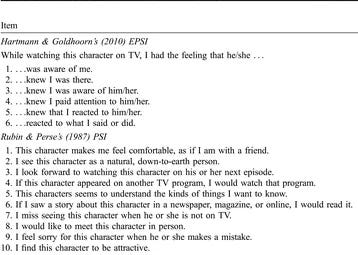
\ Being the visionary that he was, Hoerner spruced it up to apply to the internet age. Armed with this revamped tool, he set out to measure whether we could apply parasocial interaction theory to the burgeoning World Wide Web. Spoiler alert: we could, but it wasn’t as simple as slapping a fake persona on a website and calling it a day.
\ Hoerner’s study dramatically revealed that websites with flashy personae didn’t actually rack up significantly more hits than their more personality-devoid counterparts.
\ Shocking, right?
\ It turns out, users can form parasocial relationships with a website even without a digital mascot waving at them. In his words, "The literal, mediated personality from the newscast or soap opera of the past is gone"—presumably off to enjoy their retirement.
What remains is the grand symphony of design metaphors, website flow, and text-graphic combos, all conspiring to make us feel like we’re having a heart-to-heart with a block of HTML. And so, the lonely internet user’s parasocial journey continues—now featuring 404 errors and loading screens.
Social media as an incubator for parasocial interactionsWhile most of the academic world has been busy dissecting parasocial interaction (PSI) in television and film, the rise of the Internet has rudely demanded attention. New technologies have turned PSI into an even bigger playground for social psychologists.
\ As the 2000s and 2010s rolled on, researchers eagerly jumped on their Facebook accounts, documenting how blogs, social networking sites, and other online spaces are just as fertile ground for these one-sided relationships as TV and radio ever were.
\ Take Kjerstin Thorson and Shelly Rodgers, for example—academics who couldn’t help but notice that blog followers of politicians often experience such deep parasocial affection for their favorite candidate that they’re willing to cast a vote just to feel a little bit closer to them.
\ Social media, with its irresistible blend of immediacy and narcissism, was practically designed to facilitate the PSI experience. As studies have shown, the more you scroll through someone’s tweets or “like” their selfies, the more you start to feel like you’re practically in the same room with them. The digital equivalent of shouting at your favorite celebrity through the TV has now evolved into shooting them a DM, where they might almost notice you among their hundreds of thousands of followers.
\ For those unacquainted with social media’s definition—because where have you been?—it's those "Internet-based applications that build on the ideological and technological foundations of Web 2.0," meaning, it’s where everyone’s posting, sharing, and liking, trying to make their mark on the ever-turning wheel of user-generated content. Essentially, social media is a classroom, and everyone is trying to be the coolest kid in the class.
\ While the rest of us might be using it to post cat videos and brunch photos, celebrities are here to remind us of their pet causes or to subtly hint at their latest brand collaboration, all under the umbrella of engaging with their audience. Word-of-mouth promotion has never been easier, and what better way to stay relevant than by digitally high-fiving your fans?
\ Social networks inherit one of the Internet’s most charming traits: open access to all users.
\ Philip Drake and Andy Miah, no strangers to academic debate, argue that social networks and blogs have done wonders to dismantle the old-school gatekeeping of mass media. Now, anyone with a Wi-Fi signal and a soapbox can spread their thoughts far and wide, bypassing the editorial strictness of television and newspapers. Of course, this free-for-all approach to information sharing is still up for debate, as the internet’s reliability is about as solid as a rumor mill.
\ Meanwhile, our modern-day gladiators—celebrities—juggle the delicate balance of crafting and maintaining their image in this digital arena. German scholars Gregor Daschmann and Holger Schramm point out that, in the cutthroat world of public attention, celebrities must fight to keep their place in the limelight.
\ As if their competition wasn’t fierce enough, they now have to stay relevant across every social media platform imaginable. It's no longer enough to conquer one screen—you have to dominate them all.
3. How TV shows captured your attentionTelevision shows have truly perfected the art of capitalizing on parasocial interactions (PSIs) in the social media age, turning fan engagement into a fine-tuned machine.
While PSIs have been around since the golden age of broadcast media, social platforms have cranked it up a notch, blurring the line between a character's on-screen persona and the "real" person behind it. This allows fans to feel even more connected, giving them a multitude of ways to interact and fueling that illusion of intimacy.
Creating accessible personalities on social mediaOne of the most effective strategies TV shows use to harness parasocial interactions (PSIs) is by making their stars more accessible on platforms like Instagram, Twitter, TikTok, and Facebook. By maintaining active accounts, actors, reality stars, and even animated characters create the illusion of being present in the viewers' lives beyond the screen.
\ Shows like Keeping Up with the Kardashians and The Bachelor are experts in this approach, with cast members sharing behind-the-scenes moments, replying to comments, and giving real-time updates. This keeps the audience emotionally invested long after the credits roll.
\
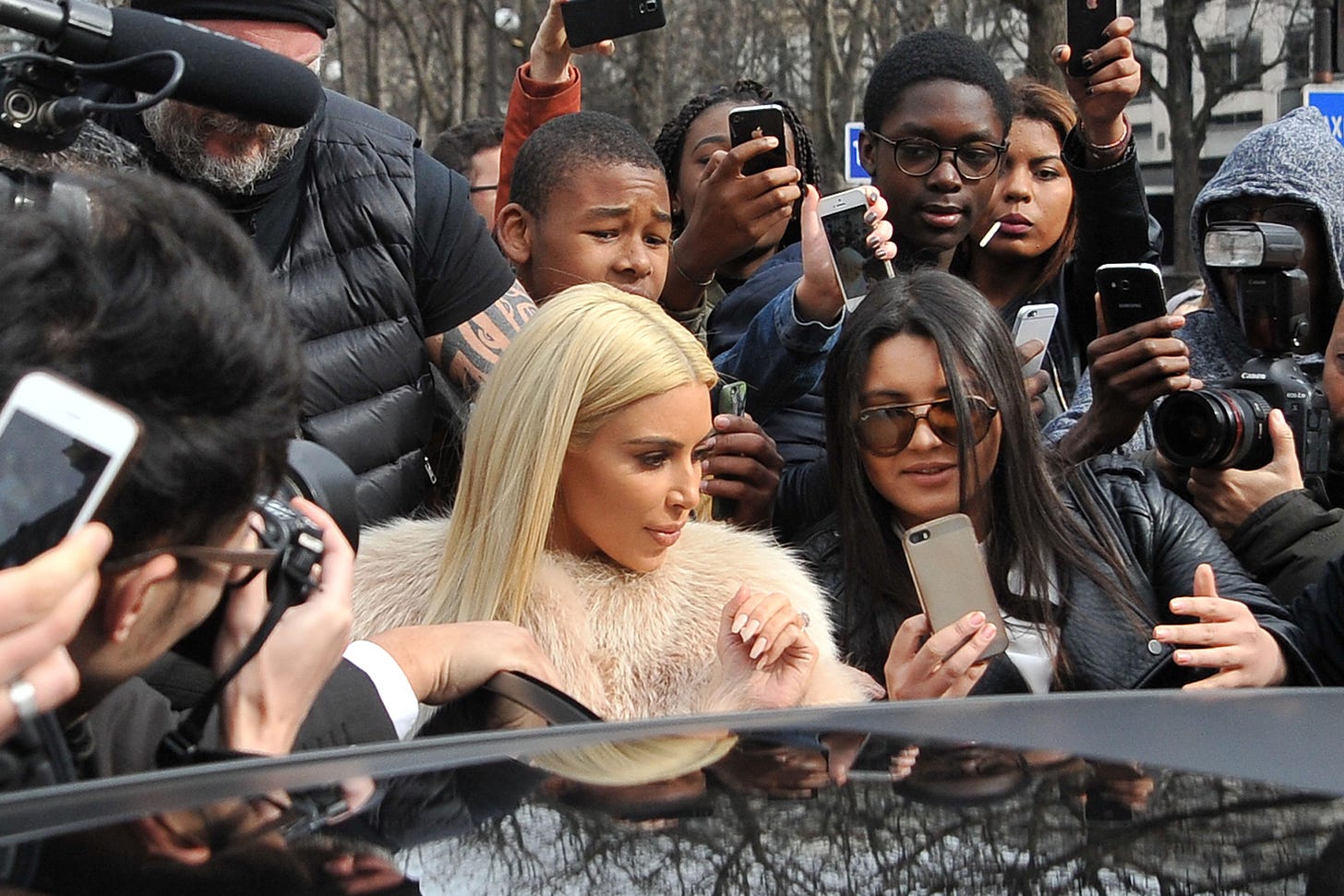
\ A prime example of this in Vietnam is Anh Trai Vượt Ngàn Chông Gai, where contestants frequently post backstage content and interact with fans on social media. This interaction fosters a sense of closeness and friendship, encouraging viewers to stay engaged with the contestants and the show even after an episode airs, deepening the parasocial connection.
Real-time engagement and interactionTV shows have increasingly embraced real-time social media interactions to deepen parasocial interactions (PSIs), particularly in live and reality TV formats. It's quite impressive how these shows leverage technology to keep viewers engaged, isn’t it?
\ Programs like American Idol and The Voice often encourage live-tweeting and audience voting through social platforms, allowing viewers to feel directly involved in the show's progression. This active participation not only enhances the viewing experience but also strengthens the emotional connection between audiences and the content.
\ In Vietnam, shows like Anh Trai Say Hi and Anh Trai Vượt Ngàn Chông Gai take a similar approach by promoting real-time engagement on platforms like YouTube and Facebook.
\ They cleverly encourage fans to comment during live broadcasts, participate in polls, and share their opinions, which enhances the parasocial dynamic. Viewers feel as though they have a personal stake in the show's outcomes.
\ This two-way interaction transforms a passive viewing experience into something much more immersive and connected. It's fascinating to see how these strategies are reshaping the way audiences engage with television content, don’t you think?
The illusion of exclusivityAnother key strategy that TV shows employ to enhance parasocial interactions (PSIs) through social media is by fostering a sense of exclusivity and behind-the-scenes access. By offering content that viewers wouldn't typically encounter during regular broadcasts, shows create a feeling of privilege and a unique bond with their audience.
\ For instance, reality shows like Big Brother often provide live feeds, allowing fans to watch unedited, candid footage of the houseguests. It’s a bit surprising, isn’t it? One might think the drama ends when the episode does, but these live feeds ensure the tension never truly dissipates. Similarly, cast members share personal vlogs, photos, and stories that invite fans into their "private" lives, reinforcing the intimacy and authenticity that PSIs thrive on.
\ In Rap Việt, Anh Trai Say Hi or Anh Trai Vượt Ngàn Chông Gai contestants regularly post behind-the-scenes videos on platforms like TikTok and Instagram, showcasing candid moments. This sense of "insider" knowledge cultivates a deeper connection between fans and the stars, making them feel as though they're gaining a richer understanding of the contestants' lives and personalities. It’s almost as if the audience becomes part of a secret club, where they’re privy to information that enhances their viewing experience.
\ This dynamic significantly fuels their emotional investment in the show, reinforcing their parasocial relationships. It’s fascinating how these layers of accessibility and insight can intensify viewers' attachment and engagement, isn’t it?
Controversy and emotional dramaControversy and emotional drama serve as potent catalysts for parasocial interactions, especially in the vibrant realm of social media. It’s fascinating how shows steeped in interpersonal conflict, heartbreak, or scandal often experience a surge in engagement. Fans become almost compelled to dive into discussions, whether they're defending their favorite contestants or dissecting the latest scandal, effectively keeping the show alive and kicking between episodes. Who would have thought that a bit of drama could be so engaging?
The celebrity cancellation movements frequently discussed in Vietnamese circles present an intriguing case study in this dynamic.
Take the TV personalities or stars from shows like Anh Trai Say Hi or Anh Trai Vượt Ngàn Chông Gai, for example; when they're embroiled in scandals or contentious debates, fans flock to platforms like Meta’s Threads to air their opinions, sparking fervent discussions that draw even more attention to the show.
\ The emotional investment viewers have in these personalities is palpable—it creates a sense of personal connection to the controversies, making them feel as though they are directly impacted by the unfolding drama.
\ In a way, it’s almost remarkable to observe how these emotional stakes fuel engagement, creating a cyclical effect where the drama enhances the show’s relevance, and the show, in turn, amplifies the discussions surrounding it.
Hashtags and viral contentAnother fascinating element in the intricate world of parasocial interactions (PSIs) is the savvy use of hashtags and viral content to make TV shows irresistibly shareable. It’s almost as if producers have discovered that memorable moments—be it an outrageous scene from a reality TV show or a jaw-dropping plot twist in a scripted drama—can be amplified through social media, reaching far beyond the confines of traditional viewership. Who knew?
\ The more a moment goes viral, the stronger the connection viewers feel, not only to the content but also to the characters involved. Take Rap Việt, for instance. The show expertly capitalizes on viral rap battles and unforgettable contestant moments, which fans eagerly transform into memes or share across their social media platforms. It’s a delightful surprise to see how these viral clips become focal points for fan discussions, weaving an additional layer of connection between viewers and the show.
\ In a world where social media reigns supreme, it’s almost too easy to marvel at how these moments foster a sense of community among fans, as they collectively bond over the shared experience of enjoying the show—one hashtag at a time.
Fan edits, fan art and fan fictionShows have taken the concept of parasocial interactions (PSIs) to delightful new heights by inviting fans to become creators themselves.
Who would have thought that mere viewers could channel their deep-seated attachment to characters or contestants into the creation of fan edits, fan art, fan fiction, and other forms of fan-driven content? It's almost as if the creators recognized that fans are not just passive consumers but active participants eager to extend the universe of their beloved shows.
\
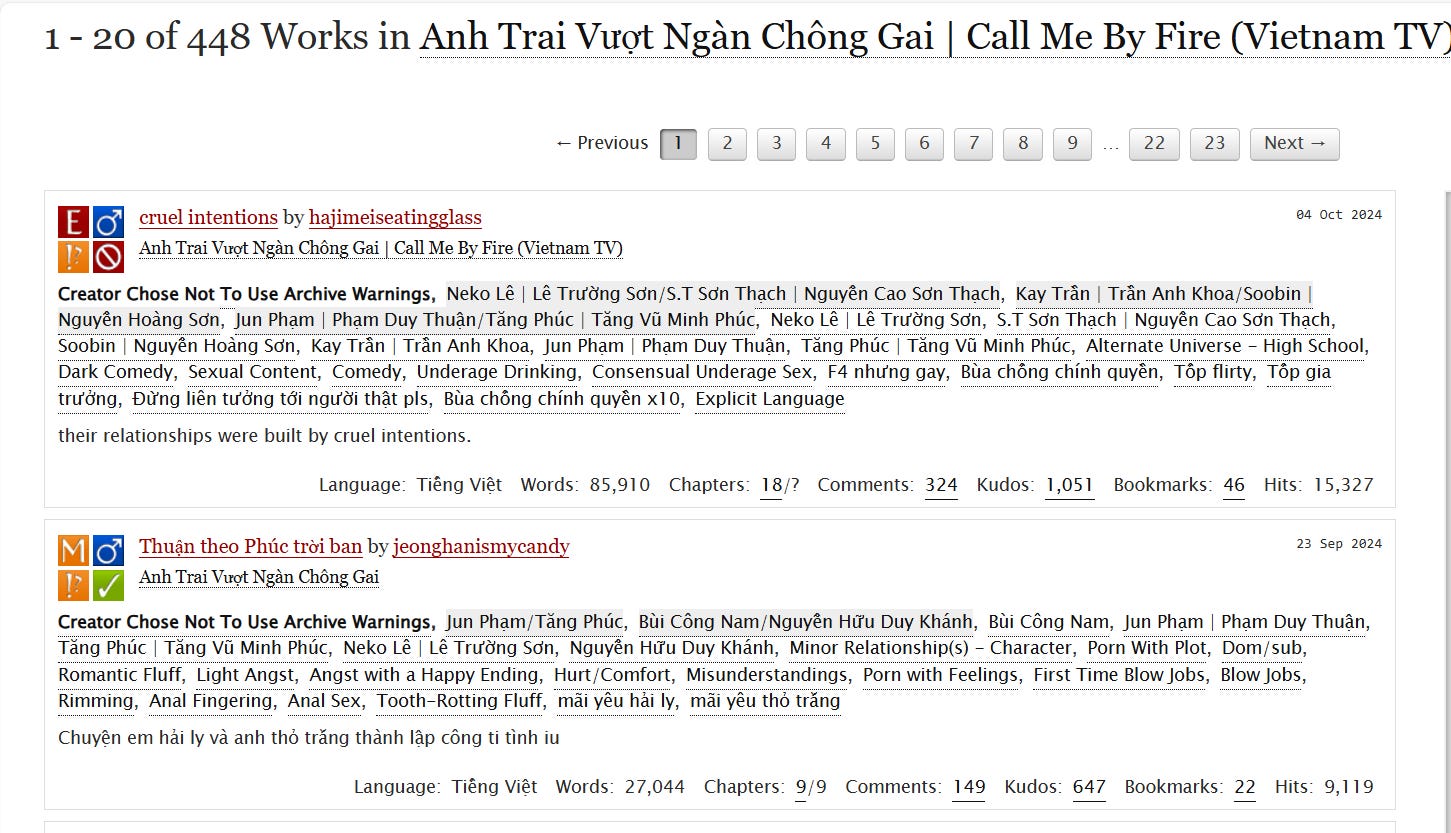
\ Surprisingly, many TV shows even take the time to share or highlight this fan content on social media—what a novel idea! By doing so, they not only validate fans’ emotional investments but also encourage them to express their bonds with the show. Fan fiction, illustrations, remixes, and tributes to favorite contestants and performances have taken social media by storm, much to everyone's astonishment.
When shows promote this fan-created content, it reinforces the illusion that viewers are not merely spectators but integral members of the show's journey. How generous of the producers to foster such a sense of belonging! One can only marvel at the ingenuity behind transforming devoted fans into unofficial co-creators, all while solidifying those cherished parasocial bonds.
Television shows leverage parasocial interactions on social media as a sophisticated strategy to maintain and grow their audience. By extending characters and personalities beyond the screen and into the realm of personal social media engagement, shows deepen emotional connections with viewers. This parasocial connection, once a passive experience, now thrives in the interactive, always-on world of social media, where fans can engage in real-time, feel personally connected, and even become creators themselves. Whether through behind-the-scenes content, real-time interactions, viral moments, or fan-driven creations, PSIs have become a powerful tool in modern TV marketing, driving attention, loyalty, and viewer engagement in unprecedented ways.
4. Does it matter?From TV shows to influencers, PSIs shape engagement patterns and drive significant social and psychological outcomes. Understanding why they matter requires examining the multifaceted impact they have on the commercial, psychological, and societal landscape. Research suggests that while these interactions can provide benefits, they also come with substantial risks.
:::tip commercial perspective: profitable attachments
:::
Parasocial relationships are a cornerstone of modern entertainment and influencer marketing strategies, as they translate directly into viewership loyalty, brand affinity, and monetization opportunities. Shows, influencers, and media companies leverage these bonds to foster deeper engagement, drive higher ratings, and convert emotional attachment into financial gain.
Increased viewership and loyaltyResearch conducted by Horton and Wohl (1956), who coined the term “parasocial interaction,” established the foundational idea that PSIs create a sense of intimacy and familiarity, making audiences more loyal and engaged.
Decades later, studies have shown that these one-sided attachments significantly increase viewer retention and loyalty. For instance, a 2017 study on YouTube influencers found that parasocial bonds were directly correlated with greater channel loyalty and purchase intentions for sponsored products (Lee & Watkins, 2017). The same applies to television; reality TV shows like The Bachelor and Keeping Up with the Kardashians rely heavily on PSIs to retain viewership over long seasons and multiple spin-offs.
Financial impact and monetizationParasocial relationships also translate into direct financial returns. A 2020 study by Chung and Cho highlighted that viewers with strong parasocial relationships were more likely to financially support their favorite media figures, through activities such as subscribing to Patreon accounts, purchasing merchandise, or attending live events. This form of emotional investment provides creators with multiple revenue streams, allowing for diversified income beyond traditional advertising.
This phenomenon is evident in shows like Rap Việt, where contestants’ social media followings skyrocket, and merchandise sales are driven by fans’ desire to feel connected to their “idols.” These emotional attachments, carefully cultivated by show producers through personalized social media content, have proven to be a lucrative strategy, directly affecting the show’s financial success.
Brand endorsement effectivenessFor influencers and personalities, parasocial bonds can enhance the effectiveness of brand endorsements. A 2020 study by Jin and Phua found that influencers with high parasocial interactions had a significantly higher impact on followers’ attitudes towards advertised products compared to those with weaker PSIs. Brands recognize this and increasingly seek partnerships with influencers who exhibit strong PSIs with their audiences, as these relationships translate into higher engagement, trust, and purchasing behavior.
:::tip psychological perspective: emotional comfort or dependency?
:::
While parasocial relationships can provide comfort and emotional support, they can also blur the lines between healthy emotional investment and dependency. The psychological effects of PSIs are complex, ranging from providing companionship to fostering unhealthy patterns of attachment.
Emotional support and social surrogacyFor many individuals, parasocial relationships act as a form of social surrogacy, filling the void left by a lack of reciprocal, real-world social relationships. A 2008 study by Derrick et al. found that parasocial relationships can offer a buffer against loneliness and provide psychological benefits similar to those experienced in real-life friendships. For some, this can be beneficial, offering a sense of companionship and support when needed.
\ Particularly during crises, PSIs become an important emotional crutch. During the COVID-19 pandemic, researchers observed a significant uptick in parasocial bonds as individuals turned to media figures for comfort and stability amid isolation (Bond, 2020). However, these bonds, while comforting, lack the mutual emotional benefits of real-world interactions.
Emotional dependency and unrealistic expectationsThe darker side of PSIs emerges when these interactions lead to emotional dependence and unrealistic expectations. A 2021 study by Tukachinsky and Stever revealed that individuals with strong parasocial relationships were more likely to experience distress, anger, or depression when the media figure failed to meet their expectations or when the illusion of intimacy was shattered, such as through controversies or character deaths.
\ In some cases, this dependence can lead to harmful behaviors. For instance, Stever’s research on fan behavior (2013) documented instances where obsessive fans developed a form of parasocial breakup distress when their favorite character left a show or when a reality TV star’s personal life contradicted their public persona. These disruptions can lead to intense emotional reactions, including grief and withdrawal.
:::tip societal perspective: fostering community or fueling toxicity?
:::
PSIs do not exist in a vacuum. They have broader implications for society, influencing how people interact, form communities, and engage in public discourse. While these interactions can foster positive communities and shared identities, they also have the potential to foster toxicity and encourage problematic behaviors.
Community building and shared identityOne of the positive societal impacts of PSIs is the formation of fan communities that provide a shared sense of identity and belonging. Research by Sandvoss (2005) highlights that these communities create spaces where individuals can express their passion, share interpretations, and form friendships with like-minded fans. Shows like Game of Thrones and The Walking Dead have massive online communities that engage in deep analysis, creative expression, and collective speculation, creating a vibrant fan culture.
These communities often extend beyond the show itself, influencing real-world social movements. For example, the “Army” fandom of K-pop group BTS has been cited as a positive force in global activism, organizing charitable events and social campaigns, all spurred by the strong parasocial bonds with the band members (Oh & Park, 2020).
Toxicity, harassment, and cyberbullyingHowever, these communities can also foster toxic behavior, such as harassment, cyberbullying, and “cancel culture.”
A 2018 study by DeCamp and Ferguson found that parasocial relationships were linked to higher incidences of aggressive behavior in online fan communities, particularly when the object of affection was criticized or attacked. This phenomenon, often termed “toxic fandom,” can lead to extreme cases where fans feel entitled to defend or police the media figure’s behavior, sometimes crossing boundaries into harassment or doxxing.
\ A well-documented example is the backlash against Star Wars actress Kelly Marie Tran, who experienced severe online harassment from fans who disliked her character in The Last Jedi. The toxic behavior stemmed from fans’ sense of ownership over the franchise and their unrealistic expectations of how characters should behave, fueled by parasocial attachments to the series.
Impact on real-world interactionsFinally, the rise of PSIs may be contributing to a shift in how people prioritize social relationships. A 2018 study by Gabriel et al. found that individuals with strong parasocial bonds were less likely to engage in real-world social interactions, leading to increased social isolation and loneliness. While parasocial relationships offer a semblance of friendship, they do not provide the reciprocal support and emotional nourishment of real-world connections, potentially exacerbating social isolation.
Parasocial interactions are not merely a side effect of modern media consumption—they are a driving force behind how content is created, consumed, and monetized. They matter because they influence viewer behavior, shape societal norms, and have deep psychological impacts. For media producers, PSIs are an invaluable tool for maintaining audience engagement and loyalty.
\ For audiences, they offer both comfort and risk, creating a complex emotional landscape that blurs the boundaries between fiction and reality. Understanding the benefits and pitfalls of PSIs is crucial for navigating their growing role in the media ecosystem.
\ And so, as we sit, phones in hand, ready to dissect the latest plot twist or 'authentic' Instagram post from our favorite contestant, let’s not forget the real lesson here: Who needs real friends when you can live vicariously through people who don’t know you exist?
\ In a world where 'connection' is just a click away, perhaps the biggest twist isn’t on screen, but in the way we’ve willingly traded intimacy for imaginary relationships. Who knew that to truly understand ourselves, all we needed was a perfectly edited, filtered reality served on a screen?
\ Now, if you’ll excuse me, I’ve got a poll to vote on for next week’s elimination.
:::tip Subscribe to receive my weekly newsletter.
:::
\
- Home
- About Us
- Write For Us / Submit Content
- Advertising And Affiliates
- Feeds And Syndication
- Contact Us
- Login
- Privacy
All Rights Reserved. Copyright , Central Coast Communications, Inc.